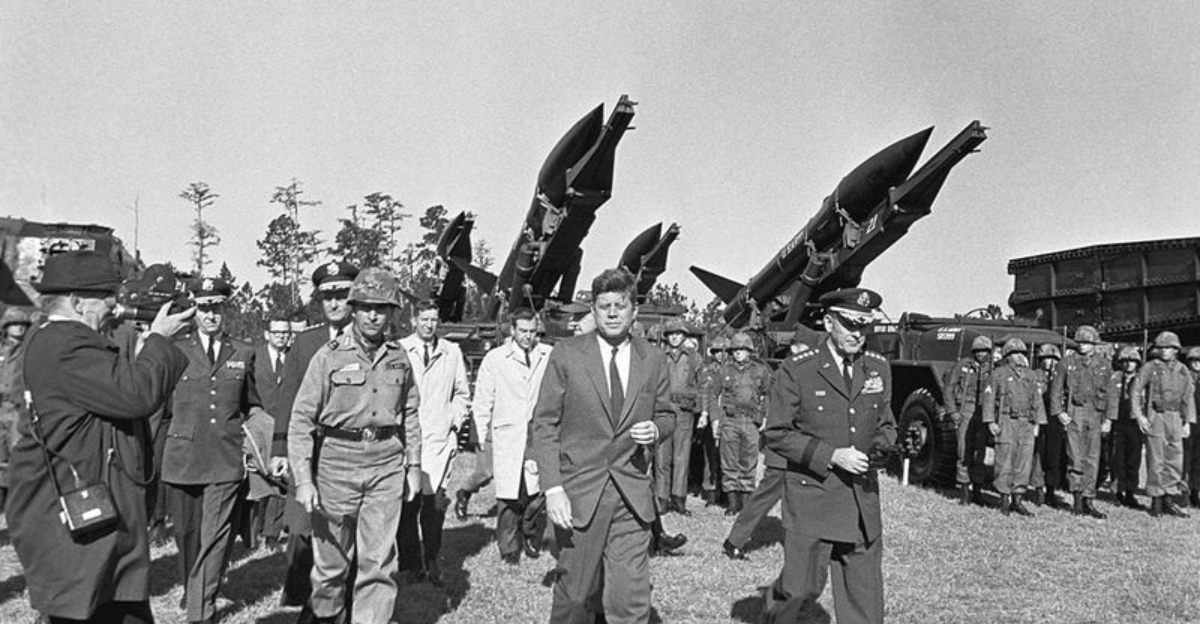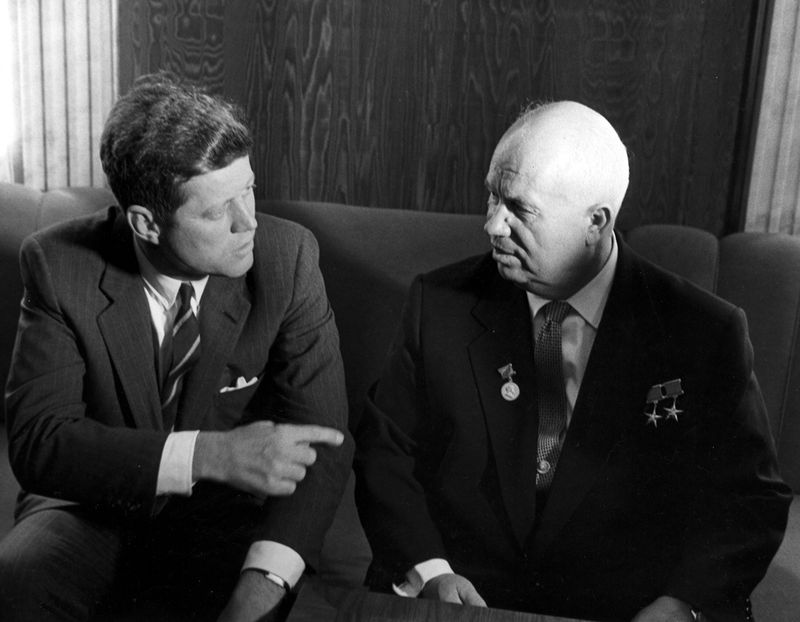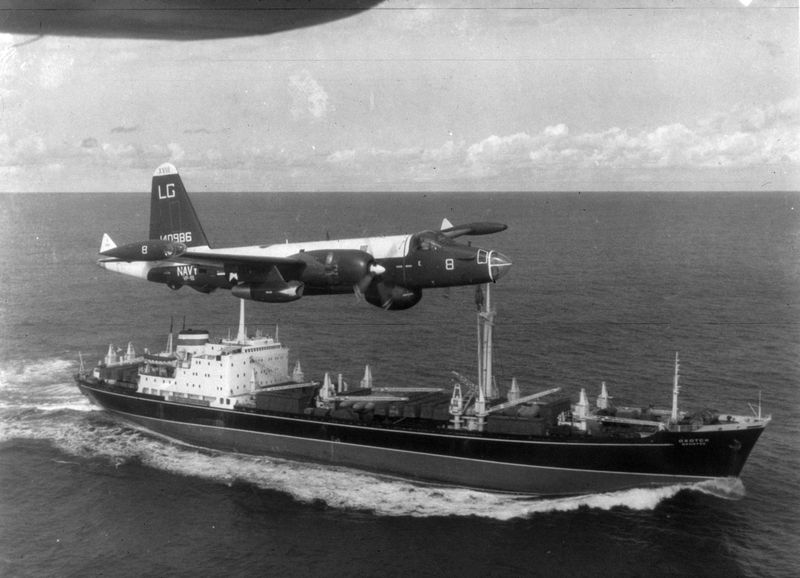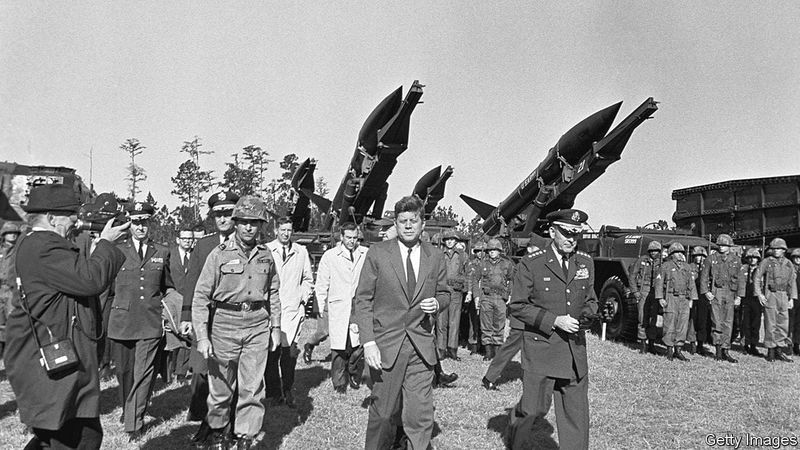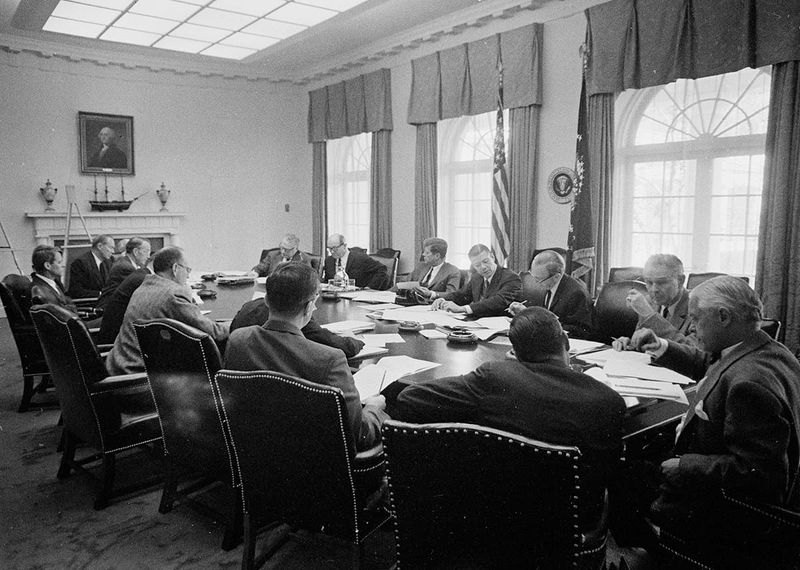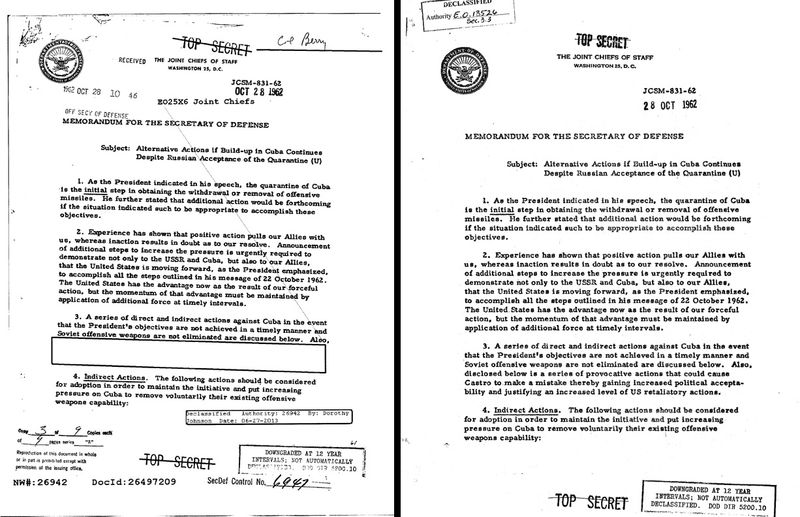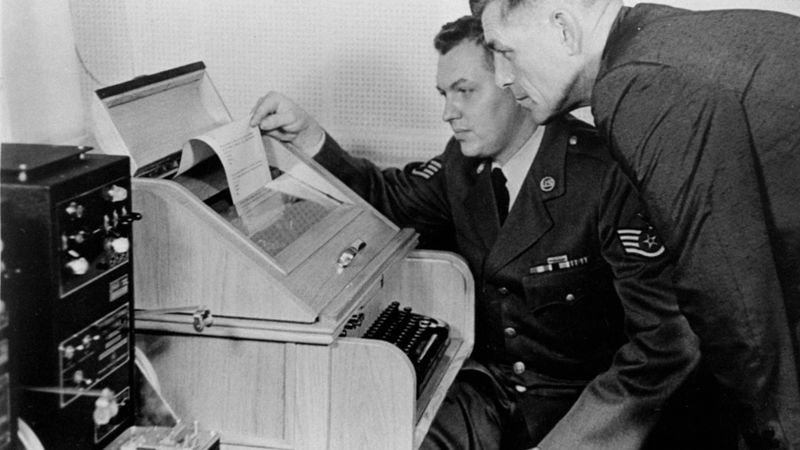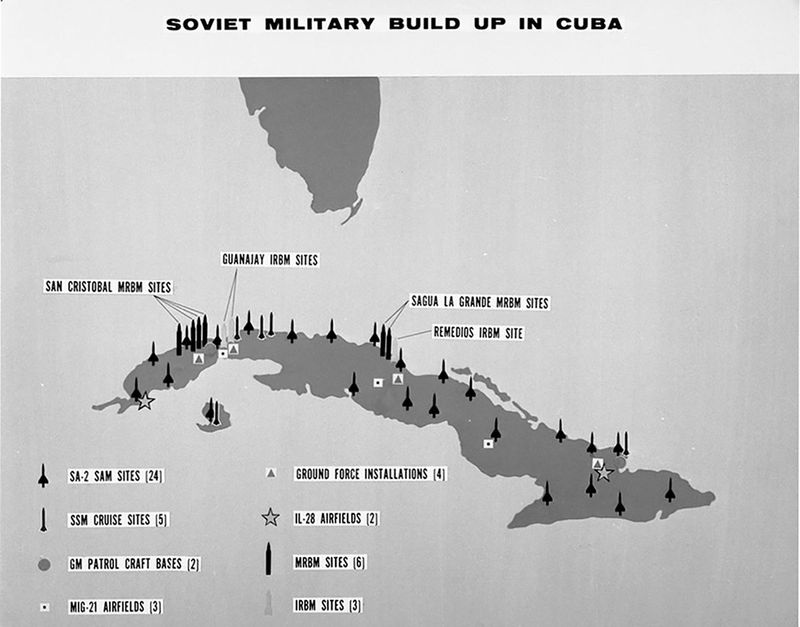The Cuban Missile Crisis of 1962 was a pivotal moment in Cold War history, where the world teetered on the brink of nuclear catastrophe.
For 13 days in October, the United States and the Soviet Union stood toe-to-toe, each with nuclear arsenals ready to deploy, and the fate of the world hanging in the balance.
It was a period of intense negotiation, high-stakes diplomacy, and nail-biting tension that ultimately led to a resolution, but not without leaving an indelible mark on history. Here are 10 fascinating facts about the crisis.
1. Timeframe
October 1962 is etched in history as the month of the Cuban Missile Crisis, a suspenseful standoff that unfolded over 13 nail-biting days.
Like a scene from a Cold War thriller, the world watched as superpowers locked horns from October 16 to 28. During this brief yet intense period, the odds of a nuclear confrontation were terrifyingly high.
This crisis was more than just a date on a calendar; it was the climax of decades of tension, where every day felt like teetering on the edge of a precipice. Each moment carried the weight of a potential global catastrophe.
2. Discovery
The Cuban Missile Crisis sprung to life when U.S. U-2 spy planes pierced the Cuban skies, capturing photographic evidence of Soviet ballistic missile sites under construction.
These images, like secret whispers from above, revealed a dangerous game unfolding just 90 miles from American shores.
The discovery was a stark reminder of how the art of espionage could alter the course of history. In a matter of hours, the tranquility of the Florida coastline was overshadowed by the ominous specter of nuclear missiles, sparking a global race against time.
3. Key Players
At the heart of the Cuban Missile Crisis were two formidable leaders: U.S. President John F. Kennedy and Soviet Premier Nikita Khrushchev. These titans of the Cold War era, both charismatic and complex, found themselves in a high-stakes diplomatic dance.
Kennedy, with his youthful charm, faced the challenge of preserving American security without igniting global conflict.
Khrushchev, with his shrewd political acumen, sought to bolster Soviet influence while avoiding catastrophic war. Their decisions, poised on a knife’s edge, defined the course of history in those tense days.
4. Crisis Trigger
The fuse of the Cuban Missile Crisis was lit when Soviet nuclear missiles began to nestle into Cuban soil, a mere 90 miles from the U.S. coast. This audacious move was akin to placing a loaded gun at America’s head, creating an immediate threat to national security.
For the United States, the missiles represented a clear and present danger, unsettling the delicate balance of power. In these turbulent times, the world held its breath, watching as the fragile peace wavered under the weight of nuclear armament.
5. U.S. Response
In response to the looming threat, President Kennedy orchestrated a naval “quarantine” around Cuba, a strategic blockade aimed at preventing further missile deliveries.
This bold maneuver was a calculated risk, designed to assert American resolve without crossing the threshold into war.
The blockade was a tense game of chess on the high seas, where each ship’s movement was scrutinized and analyzed. With the world watching, Kennedy’s measured approach managed to assert strength while keeping the doors of diplomacy open.
6. High Stakes
The Cuban Missile Crisis was a dance on the razor’s edge of nuclear conflict, a high-stakes drama where the world watched with bated breath. The specter of an all-out nuclear war loomed large, casting a shadow over everyday life.
For many, the crisis underscored the fragility of peace in a world bristling with nuclear arsenals. The stakes were nothing short of apocalyptic, and every diplomatic move was fraught with peril. It was a time when humanity’s very future hung in the balance, like a pendulum over the abyss.
7. Diplomatic Negotiations
Behind the public posturing of the Cuban Missile Crisis, there lay an intricate web of diplomatic negotiations. These back-channel communications, conducted in shadowy corridors and dimly lit rooms, were crucial in defusing the explosive situation.
Leaders on both sides engaged in a delicate dance of diplomacy, where each word was weighed with utmost care.
These clandestine talks were not just about avoiding war; they were a testament to the power of dialogue and the importance of keeping communication channels open in times of crisis.
8. Secret Deal
The curtain fell on the Cuban Missile Crisis with a clandestine agreement that remained hidden from the public eye for years. The Soviet Union agreed to dismantle its Cuban missiles, while the U.S. pledged not to invade Cuba and secretly removed its missiles from Turkey.
This secret deal was a masterstroke of diplomacy, showing how compromise can avert disaster. Though cloaked in secrecy, it laid the groundwork for a fragile peace, reminding the world of the delicate balance between transparency and strategic ambiguity in international relations.
9. Aftermath
In the wake of the Cuban Missile Crisis, the world breathed a collective sigh of relief, but the echoes of those tense days lingered on. The crisis catalyzed a thaw in Cold War tensions, fostering increased dialogue between the superpowers.
One tangible outcome was the establishment of the Moscow-Washington hotline, a direct communication channel designed to prevent future misunderstandings.
This red phone became a symbol of the newfound caution and cooperation, illustrating how close brushes with disaster can sometimes pave the way for peace.
10. Historical Impact
The Cuban Missile Crisis endures as a stark reminder of the perils of nuclear brinkmanship. It was a watershed moment in history, highlighting the thin line between peace and global catastrophe.
This period of intense tension underscored the vital role of diplomacy in international conflicts. The crisis’s legacy resonates through the ages, illustrating the importance of dialogue, communication, and compromise in resolving disputes.
As history’s pages turn, the lessons of the Cuban Missile Crisis continue to guide leaders in the pursuit of lasting peace.
